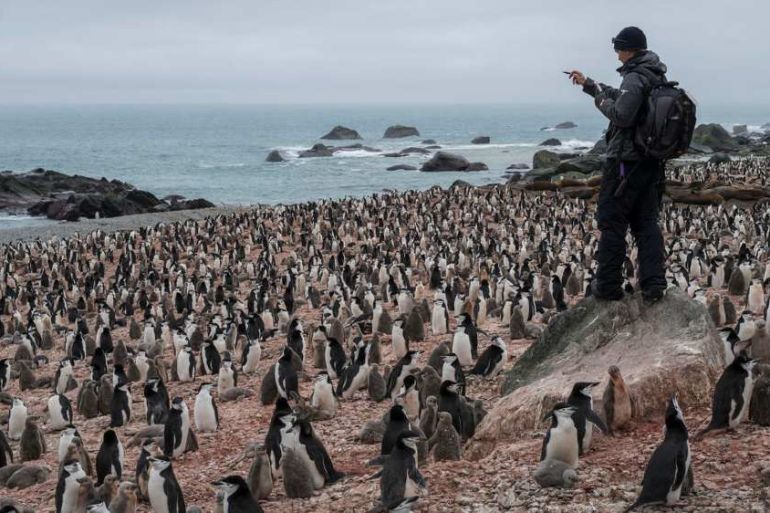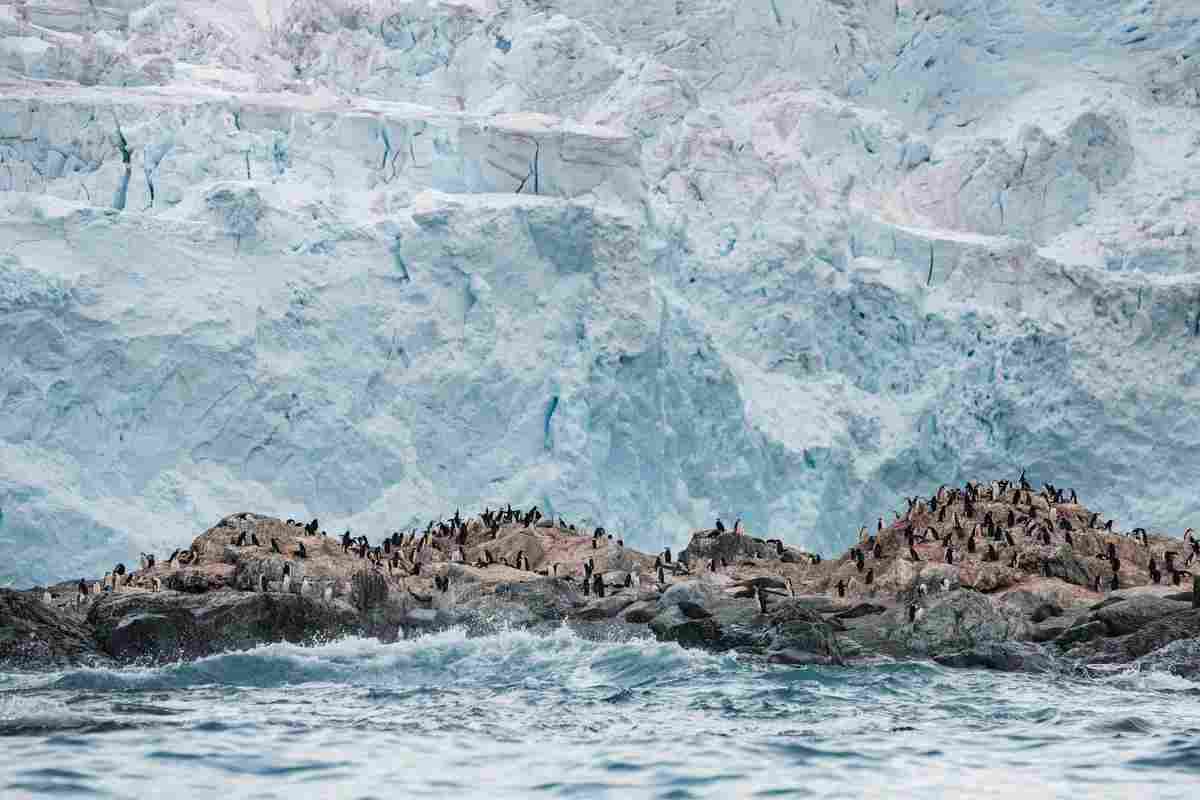Antarctic penguin colonies decline 77 percent in 50 years
Chinstrap Penguin colonies are collapsing in the Antarctic, a new research voyage has discovered.

Researchers studying chinstrap penguins in the Antarctic have found drastic reductions in many colonies, with some declining by as much as 77 percent since they were last surveyed almost 50 years ago.
Scientists on a Greenpeace expedition to the region found every single colony surveyed on Elephant Island, an important habitat northeast of the Antarctic Peninsula, had declined.
Keep reading
list of 3 itemsMelting away: Antarctica ice loss increases six-fold since 1979
Let’s stand up for Antarctica
The number of chinstrap penguins on Elephant Island has dropped almost 60 percent since the last survey in 1971, with a total count of only 52,786 breeding pairs of chinstrap penguins, plummeting from previous survey estimates of approximately 122,550 pairs.
“Such significant declines suggest that the Southern Ocean’s ecosystem is fundamentally changed from 50 years ago, and that the impacts of this are rippling up the food web to species like chinstrap penguins,” said Heather J Lynch, associate professor of ecology and evolution at New York’s Stony Brook University, and one of the expedition’s leads.
“While several factors may have a role to play, all the evidence we have points to climate change as being responsible for the changes we are seeing.”
But why is a decline in penguin numbers important? “Penguins are an indicator species – the canaries in the coal mine for the ocean, if you will,” Dyan deNapoli, the award-winning author of The Great Penguin Rescue, told Al Jazeera.
“The dramatic decline we’re seeing in their numbers is an indication that the overall health of the ecosystem they inhabit is also in decline. More simply stated, if penguins are dying, it means our oceans are dying. Which ultimately will impact other species, including humans.”
To complete the study, an observer must count every single penguin nest, one by one, and repeat the count three times within a five percent margin to ensure accuracy. It is often easiest to find a high point with a good view, and use landmarks like rocks and other terrain features to visually divide up large groups of birds.

Elephant Island is home to one of the world’s largest chinstrap penguin populations, yet it has only been ornithologically surveyed once in 1971, by a British Joint Services expedition.
Campaigners this week have been installing “disappearing” penguin ice sculptures in capitals around the world, from Seoul to London and Buenos Aires to Cape Town, to demand urgent action to protect ocean wildlife with a Global Ocean Treaty.
“As wildlife struggles, we urgently need sanctuaries free from harmful human activity, not only in the Antarctic, but across the world’s oceans, so marine life like penguins have the space to recover from human activity and adapt to our rapidly changing climate,” said Frida Bengtsson of Greenpeace’s Protect the Oceans campaign.
“To do that, it’s imperative that governments agree on a Global Ocean Treaty this year.”
The team of scientists, from Stony Brook and Northeastern University in Boston, has also been surveying a series of large, but relatively unknown, chinstrap penguin colonies on Low Island, using manual and drone surveying techniques. This will be the first time the island, thought to have around 100,000 breeding pairs of chinstrap penguins, has been properly surveyed from land, with results to follow.
“The number one threat to nearly all penguin species today is global warming. Number two is overfishing of their food sources,” deNapoli told Al Jazeera. “Both of these threats appear to be leading to starvation for several different penguin species – for both adults and their offspring… For the Chinstrap Penguins in Antarctica, their primary food source – krill – is impacted in seasons with reduced sea ice. The sea ice that develops each winter acts as a nursery for the krill larvae, which feeds on the algae growing on the bottom surface of the sea ice. So, when there’s less sea ice, less krill is produced.
“So, it seems the best way to protect and restore penguin populations would be to mitigate global warming and overfishing of penguins’ food sources.
Two of Greenpeace’s ships, the Esperanza and Arctic Sunrise, are in the Antarctic on the final leg of the group’s “Pole-to-Pole” expedition, documenting threats to the world’s oceans.
Campaigners want to set up three Antarctic sanctuaries to offer protection for the chinstrap penguin colonies and other species. The proposal for a Global Ocean Treaty, which is due to be discussed at the United Nations in March, could lay the groundwork for a network of ocean sanctuaries, covering 30 percent of the world’s oceans by the end of this decade.
“We need to move to the next level, beyond just stating our opinions,” said the representative of the European Union after the previous round of talks on a new treaty. The draft treaty provided a good basis, he said.
“The world is watching us … We want the [conference] to send a strong message in favour of protecting our oceans in a collaborative manner.”